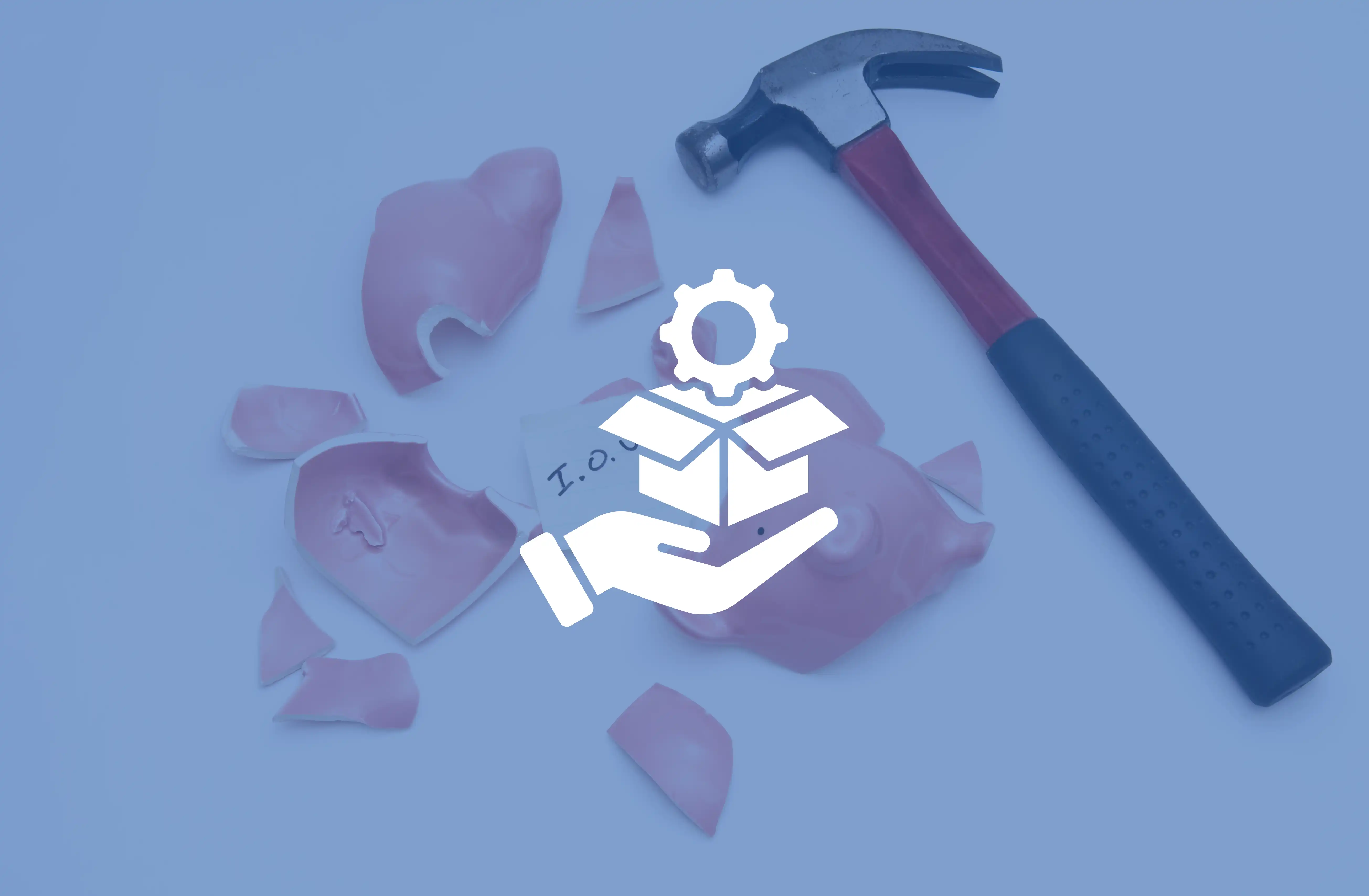From Piggy Banks to Product Hooks: Why Credit Unions Need a Feature Strategy
By Jennifer Hernandez
6 min read
October 15, 2025

Member loyalty used to be earned through relationships and small tokens. Today, it's built through product experiences that feel personal, modern, and habit-forming.
A Trip Down Memory Lane
When I worked at a credit union, no one ever handed out toasters. What we did have were piggy banks for kids, branded pens, water bottles, cup coasters, and even sun shades for cars. I still remember my kids proudly using those little piggy banks. My colleagues' kids had them too.
It was simple, tangible, and in many ways, effective. These small gestures anchored us in the community. They made members feel part of something familiar.
But those tactics worked in a world where branches were the primary touchpoint, and member relationships were built face-to-face. In 2025, that world looks very different.
The battlefield has shifted. Welcome to the Feature Wars.
Everyone's Competing on the Same Boring Stuff
Let's be honest. The credit union value proposition has started to sound like a high school group project where everyone picked "climate change" because no one wanted to think harder.
- "We have great rates."
- "We care about members."
- “We are not for profit but for for service"
All true. All identical. It's like a row of identical houses in a planned suburb, with different colored mailboxes and the same lawn gnome out front.
Meanwhile, fintechs are out there turning features into growth machines. Chime grew past 12 million users by marketing "get paid two days early" as if they'd discovered fire. Startups like Self and Grow Credit have built entire businesses around rent reporting and credit score lifts. These aren't utilities. They're conversion engines.
Feature-Led Growth Is Real
Credit-building tools are quietly becoming the loyalty engine of the next era. CU Times recently highlighted how credit-building features, once the niche of scrappy fintechs, are making their way into credit union product roadmaps. And with good reason.
Nearly one in three U.S. adults has a subprime or thin credit file, according to Experian. That's not a niche. That's a market. Credit-building products address that reality head-on.
They drive:
- Deposit growth, because sticky members park more money.
- Interchange revenue, because members use the card that builds their credit.
- Lifetime relationships, because no one forgets the lender that helped them move from 580 to 720.
Think of it this way. Netflix didn't beat Blockbuster because it had more movies. Blockbuster had movies. Netflix wrapped them in algorithms, interfaces, and experiences that made you feel like the content was made for you. Credit-building features are your equivalent of "Because you watched Suits," except the recommendation is "Because you missed two payments, here's how to climb back."
Stop Selling Checking Accounts Like It's 2008
Here's the uncomfortable part. Many credit unions are still trying to differentiate on checking accounts, debit cards, and "community feel." That's like trying to win the streaming wars with a DVD rental plan that boasts "fewer late fees."
The winners in this next era will treat feature development as a growth strategy, not a footnote in the roadmap. Rent reporting, secured credit lines, real-time credit coaching, and gamified credit score trackers are not nice-to-haves. They're emotional hooks. They say, "We're invested in your financial story."
What Fintechs Like Upgrade Got Right
Before Algebrik, I spent time at Upgrade Inc., a fintech that scaled at breakneck speed. Upgrade has delivered over $40 billion in credit to more than 7 million customers. Its card was named one of the fastest-growing in the U.S. by the Nilson Report.
That growth didn't come from community branches. It came from a relentless focus on product mechanics. Upgrade turned responsible credit-building into a growth hook. Features like installment-style repayment structures and transparent paydown experiences weren't 'add-ons.' They were the core value proposition.
The lesson is simple. Where credit unions used swag and community presence to build trust, fintechs like Upgrade built digital trust loops inside their products. They made the feature the message.
Credit-Building Is Becoming the New Loyalty Anchor
Credit-building tools are moving from niche to mainstream. One in three American adults has a subprime or thin credit file. For that population, credit-building isn't 'nice to have.' It's the pathway to financial agency.
Credit unions that adopt tools like rent reporting, secured lines, real-time credit coaching, or gamified score journeys aren't just modernizing. They're creating new engagement flywheels. Early pilots show that members using these tools log in more frequently, use more products, and are less likely to churn.
This is exactly how fintechs grew without branches. And credit unions can do it too, but with the trust advantage already in hand.
From Relationship-First to Relationship-Plus-Feature
This isn't about abandoning the community. It's about evolving how you deliver it.
- The piggy bank represented trust built through shared space.
- The feature represents trust built through daily utility.
The future loyalty model for credit unions is relationship plus product hook. Member service will always matter. But in a digital-first world, it's the feature that pulls members in, keeps them active, and builds new kinds of stickiness.
Build Your Signature Feature
Every successful fintech has a signature feature. For Upgrade, it was turning credit into a predictable, empowering experience. For Chime, it was an early direct deposit. For credit unions, it doesn't have to be flashy, but it does have to be real.
So the next time growth discussions come up, ask this:
"What's our version of that piggy bank for 2025? What's the single feature that makes members stay, talk, and come back?"
Because the real differentiator isn't swag. It's the product experience that earns the member's trust every single day.
More Blogs

Blog
When the Game Changes

Blog
From Piggy Banks to Product Hooks: Why Credit Unions Need a Feature Strategy

Blog
From Pixels to People: Rethinking Lending